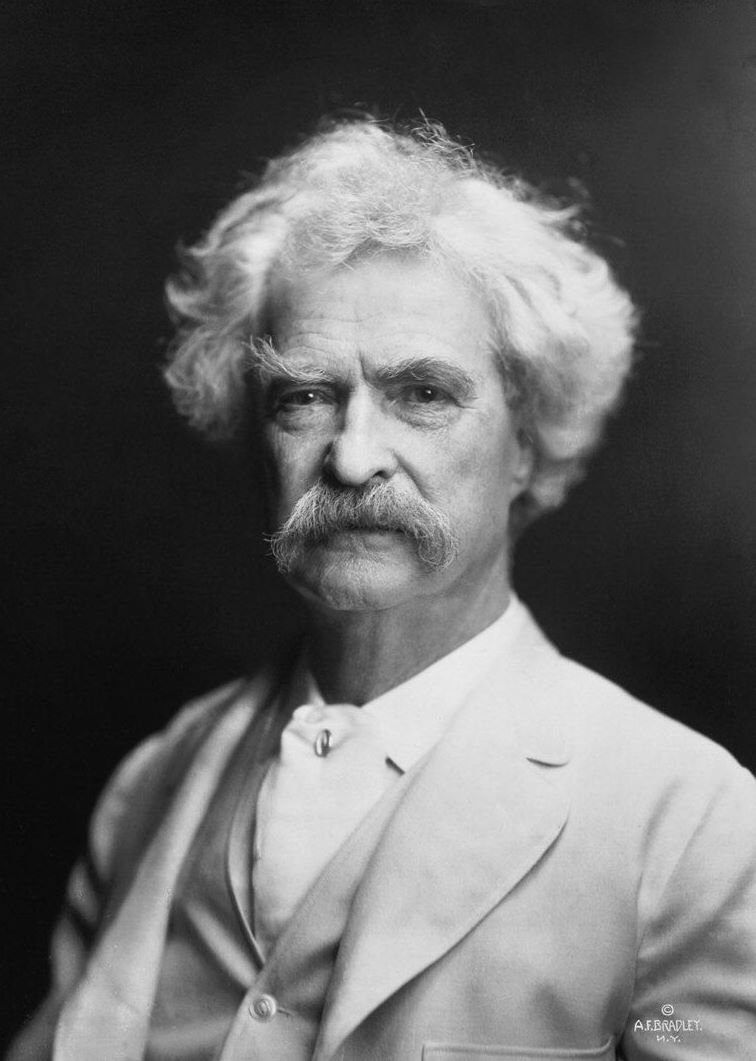Mark Twain, born Samuel Langhorne Clemens in 1835, is one of the most celebrated and revered figures in American literature. His timeless works, such as “The Adventures of Tom Sawyer” and “Adventures of Huckleberry Finn,” have become staples of American fiction and continue to be studied and appreciated by readers and scholars alike. Twain’s unique writing style and wit, combined with his keen observations of human nature and society, have made his works not only enjoyable but also deeply thought-provoking. In this article, we will explore the life and works of Mark Twain, delving into his writing career, the influence he had on American literature, and the legacy he left behind for future generations of writers.
The Early Life of Mark Twain
Samuel Langhorne Clemens was born in the small village of Florida, Missouri, on November 30, 1835. He was the sixth of seven children, and his family moved to the nearby town of Hannibal when he was four years old. Growing up in Hannibal, a port town on the Mississippi River, would prove to be a significant influence on Twain’s life and writings. His experiences living near the river, observing the steamboats and the bustling activity of the town, would later serve as the backdrop for some of his most famous works.
Twain’s childhood was marked by numerous hardships and tragedies. His father died when he was only eleven years old, leaving the family in financial difficulty. As a result, Twain was forced to leave school and find work to help support his family. He held various jobs, such as an apprentice printer, typesetter, and eventually a riverboat pilot on the Mississippi River – a profession he would later romanticize in his writings. These early experiences and hardships would shape Twain’s character, infusing his work with a deep understanding of the human condition and a biting satirical edge.
The Writing Career of Mark Twain
Twain’s writing career began in earnest in the late 1850s and early 1860s, as he started contributing articles and humorous sketches to newspapers and magazines. In 1863, he adopted the pen name “Mark Twain,” which was derived from his riverboat piloting days. The pseudonym is a nautical term that means “two fathoms deep” or “safe water,” reflecting his early experiences on the Mississippi River.
In 1865, Twain achieved national fame with the publication of his short story, “The Celebrated Jumping Frog of Calaveras County.” The humorous tale, which features a cunning gambler and his remarkable frog, became a sensation and established Twain as a prominent figure in American literature. This success would pave the way for his first book, “The Innocents Abroad,” a travel narrative that chronicled his journey through Europe and the Holy Land. The book was a bestseller and further cemented Twain’s reputation as a skilled writer and humorist.
The Adventures of Tom Sawyer and Huckleberry Finn
Perhaps the most enduring and beloved of Twain’s works are “The Adventures of Tom Sawyer” (published in 1876) and its sequel, “Adventures of Huckleberry Finn” (published in 1884). Both novels are set in the fictional town of St. Petersburg, which is based on Twain’s hometown of Hannibal, Missouri. The books follow the adventures of young boys, Tom Sawyer and Huckleberry Finn, as they navigate the complexities of life in the pre-Civil War American South.
“The Adventures of Tom Sawyer” is a lighthearted and nostalgic look at childhood, as Tom and his friends engage in various escapades and mischief. Through their adventures, Twain explores themes of friendship, morality, and the nature of childhood. In contrast, “Adventures of Huckleberry Finn” delves into darker territory, as Huck and his companion, a runaway slave named Jim, journey down the Mississippi River in search of freedom. The novel tackles themes of race, slavery, and the moral dilemmas faced by its characters.
Mark Twain’s Unique Writing Style
One of the key elements of Twain’s writing that sets him apart from other authors is his distinctive and innovative writing style. Twain was a master of colloquial speech, and his use of regional dialects and slang brought his characters to life and added an authenticity to his work. His writing was also marked by a sharp wit and a keen sense of satire, which he used to expose the hypocrisies and injustices present in society.
Twain’s writing also displayed a deep understanding of human nature and the complexities of life. His characters were often flawed and morally ambiguous, reflecting the real-world struggles and dilemmas faced by people in their everyday lives. This depth of character and insight into the human experience made his work not only entertaining but also thought-provoking and resonant.
The Influence of Mark Twain on American Literature
Mark Twain’s impact on American literature cannot be overstated. His works have become an integral part of the American literary canon, and his influence can be seen in the works of numerous authors who followed in his footsteps. Twain’s use of regional dialects and colloquial speech helped to popularize these elements in literature, making it more accessible and relatable to a wider audience.
In addition, Twain’s exploration of social issues and commentary on the injustices present in society helped to pave the way for other authors to tackle similar themes in their work. His humorous and satirical approach to these issues made them more palatable and engaging for readers, allowing important conversations to take place within the realm of literature.
Lesser-Known Works by Mark Twain
While Twain is best known for his novels, he was also a prolific writer of short stories, essays, and even plays. Some of his lesser-known works include “The Prince and the Pauper,” a historical novel set in Tudor England, and “A Connecticut Yankee in King Arthur’s Court,” a satirical time-travel story that critiques both the romanticized past and the modern world.
Twain also experimented with science fiction, as seen in his short story “From the ‘London Times’ of 1904,” which envisions a futuristic world governed by technology. Additionally, he wrote extensively about his own life experiences in works such as “Life on the Mississippi” and “Roughing It,” providing readers with an intimate glimpse into his personal journey as a writer and adventurer.
Personal Life and Controversies Surrounding Mark Twain
Twain’s personal life was marked by both success and tragedy. He married Olivia Langdon in 1870, and the couple had four children together. Despite his fame and financial success, Twain was plagued by various financial setbacks and business failures throughout his life. He also suffered the loss of three of his children and his beloved wife, Olivia, which would greatly impact his later writings.
Twain was also no stranger to controversy during his lifetime, as his works often tackled sensitive subjects and challenged societal norms. “Adventures of Huckleberry Finn,” in particular, has been the subject of much debate and criticism, both for its use of racial slurs and its portrayal of African American characters. However, many scholars argue that Twain’s intention was to critique the racist attitudes of the time and that the novel ultimately delivers an anti-slavery message.
Mark Twain’s Legacy and Impact on Modern Authors
Mark Twain’s legacy as a literary giant has endured, with his works continuing to be read, studied, and celebrated by readers and scholars alike. His influence on modern authors is evident, as many contemporary writers, such as Ernest Hemingway, William Faulkner, and Toni Morrison, have cited Twain as a significant inspiration for their own work.
Twain’s contributions to American literature have also extended beyond his own writings, as his advocacy for copyright reform and his support of other authors helped to shape the literary landscape of his time. His dedication to the craft of writing and his passion for exposing the truth through satire and humor continue to inspire and resonate with readers and writers today.
Conclusion: The Lasting Genius of Mark Twain
The literary genius of Mark Twain is undeniable. His timeless works, such as “The Adventures of Tom Sawyer” and “Adventures of Huckleberry Finn,” continue to captivate and challenge readers, as they delve into the complexities of human nature and society. Twain’s unique writing style, marked by his mastery of colloquial speech and his sharp wit, has left a lasting impact on American literature and inspired countless authors who have followed in his footsteps.
As we explore the life and works of Mark Twain, we can appreciate not only the enduring appeal of his stories but also the profound insights and truths that they reveal about the human experience. Through his writings, Twain has left us with alegacy that extends far beyond his own time, shaping the literary landscape and inspiring generations of writers to come.
Mark Twain’s impact on American literature remains as vital and relevant today as it was over a century ago. His willingness to tackle controversial issues and his use of satire and humor to expose societal injustices continue to provide a blueprint for writers seeking to use their craft to effect social change. Twain’s contributions to American literature are a testament to the power of words and the enduring legacy of those who use them to challenge, illuminate, and entertain.
In conclusion, exploring the life and works of Mark Twain allows us to appreciate the depth and breadth of his literary genius. From his early experiences growing up in Hannibal to his later years as a celebrated author and public figure, Twain’s life was marked by a dedication to the craft of writing and a commitment to exposing the truth no matter how uncomfortable or controversial. His influence on American literature and his legacy as a literary giant continue to inspire and challenge writers and readers alike, cementing his place as one of the greatest authors of all time.







